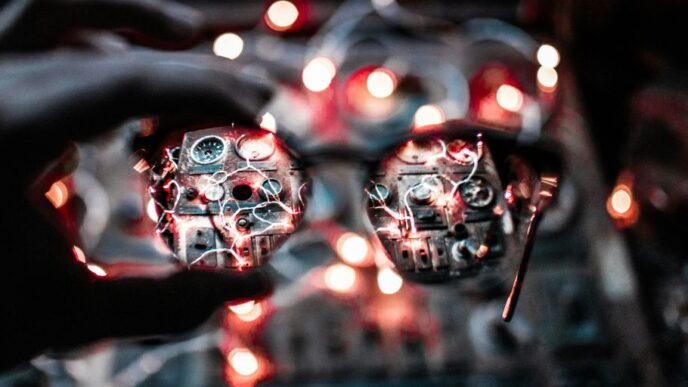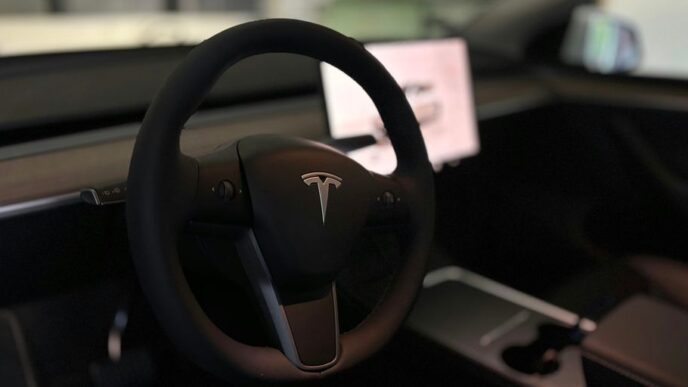The BMW 2002 is one of those cars that just sticks in your mind. Whether you’re a die-hard gearhead or just someone who loves a good story, this car has something for everyone. Back in the day, it wasn’t just a car—it was a statement. It helped BMW get back on its feet after some tough times and set the stage for what the brand is today. Let’s take a trip down memory lane and explore what made the 2002 car so special.
Key Takeaways
- The BMW 2002 played a huge role in BMW’s recovery after World War II, proving that small, sporty cars could be a big hit.
- Iconic models like the BMW 2002 Turbo and custom restorations by enthusiasts continue to capture the imagination of car lovers.
- Decades later, the BMW 2002 still holds its place as a symbol of innovation and a cornerstone of BMW’s legacy.
The BMW 2002: A Revolution in Automotive Design
Origins of the BMW 2002 and Its Impact
Back in the 1960s, BMW was in a tough spot. The company was still recovering from the financial strain of the post-war years and needed something fresh to stay afloat. Enter the BMW 2002. Launched in 1968, this compact sports sedan became a game-changer for BMW. It wasn’t just another car—it was the car that helped define the brand’s future. With its sporty feel and accessible price, it appealed to a wide range of drivers. The 2002 wasn’t just about getting from point A to point B; it made the journey exciting. This model set the stage for BMW’s reputation as a maker of “ultimate driving machines.”
The Role of the 2002 in BMW’s Post-War Recovery
The 2002 wasn’t BMW’s first attempt at revival, but it was the most successful. Before it, the company had introduced the “Neue Klasse” sedans, which were well-received but didn’t have the same wow factor. The 2002 took what worked in those earlier models and added a level of performance and style that made people take notice. This car wasn’t just a hit in Germany—it found fans all over the world. Its success allowed BMW to stabilize financially and invest in future innovations. The 2002 was more than a car; it was a lifeline for a brand that was struggling to find its footing.
Key Features That Defined the BMW 2002
Several elements made the 2002 stand out:
- Compact Size with Big Performance: The 2002 was small but mighty, offering a 2.0-liter engine that delivered impressive power for its time.
- Driver-Centric Design: Everything about the car, from the seating position to the handling, was aimed at making the driver feel connected to the road.
- Timeless Aesthetics: Its clean lines and understated design have aged gracefully, making it a favorite among classic car enthusiasts today.
The BMW 2002 wasn’t just a car; it was a statement. It proved that a small sedan could be sporty, stylish, and practical all at once. Even decades later, its influence is still felt in modern BMWs.
Iconic Models of the 2002 Car Era

The Legendary BMW 2002 Turbo
The BMW 2002 Turbo, introduced in 1973, was a game-changer for its time. It was the first turbocharged production car from BMW, and it didn’t shy away from showing off its bold personality. With its vibrant stripes and aggressive stance, the 2002 Turbo made a loud statement. Under the hood, it packed a 2.0-liter engine with 170 horsepower, which was quite the feat back then. Only 1,672 units were produced, making it a rare gem today. If you ever come across one, chances are it’s worth a small fortune. This car didn’t just set the tone for BMW’s future performance vehicles—it redefined what people thought a compact car could do.
Nick Tabeta’s 1971 BMW 2002 Restoration
Nick Tabeta’s journey with his 1971 BMW 2002 is a story of passion and persistence. This wasn’t just a car for him—it was a project, a dream, and eventually, a masterpiece. When he got his hands on the car, it was far from perfect. Years of wear and tear had taken their toll, but Nick saw potential where others might have seen junk. He poured his heart into restoring it, from the mechanics to the aesthetics. The result? A stunning example of a classic BMW 2002 that not only runs like a dream but also turns heads wherever it goes. Nick’s story is proof that with enough dedication, you can breathe new life into even the most tired of vehicles.
Olli Grimme’s 1973 BMW 2002 Tii
Olli Grimme’s 1973 BMW 2002 Tii is another standout example of how this car has captured the hearts of enthusiasts worldwide. The Tii model was already a step up from the standard 2002, with its fuel-injected engine offering better performance and reliability. But Olli took it to another level. His meticulous attention to detail and commitment to authenticity have made his 2002 Tii a benchmark for restorations. Whether it’s the original paint color or the factory-spec interior, every inch of this car screams perfection. It’s not just a car; it’s a rolling piece of art that celebrates the legacy of the BMW 2002.
Cultural and Historical Significance of the 2002 Car

The 2002 as a Symbol of 1970s Automotive Innovation
The BMW 2002 wasn’t just a car—it was a statement. In the 1970s, the world was undergoing massive changes, and the 2002 fit right into the narrative of innovation and progress. It was compact, sporty, and practical, a rare combination back then. This car showed that you didn’t need a massive engine or a huge frame to create something thrilling to drive. It was all about balance, precision, and making the most out of what you had. For a lot of people, the 2002 was their first taste of European engineering that didn’t feel out of reach. It was aspirational but accessible, and that’s what made it so special.
Racing Heritage and the Alpina BMW 2002
When it comes to racing, the 2002 wasn’t just a participant—it was a contender. Models like the Alpina-tuned versions took the car to a whole new level. These weren’t just street cars with a few tweaks; they were purpose-built machines designed to dominate on the track. The Alpina BMW 2002 became a legend in motorsports circles, proving that small cars could pack a serious punch. This racing pedigree added a layer of excitement and credibility to the 2002’s reputation. It wasn’t just a car you could drive to work; it was a car you could take to the track and win.
The Enduring Legacy of the BMW 2002 in Modern Times
Even today, the BMW 2002 is more than just a classic car—it’s a cultural icon. People don’t just see it as an old car; they see it as a piece of history, a symbol of a time when driving was pure and unfiltered. Enthusiasts around the world restore these vehicles, not just to keep them running but to preserve their spirit. Events and gatherings dedicated to the 2002 are still popular, bringing together people who share a passion for this timeless machine. The 2002’s influence can even be seen in modern BMWs, which strive to capture that same blend of performance and practicality. In a way, the 2002 isn’t just a car—it’s a legacy that continues to inspire.
The 2002 Car holds a special place in our culture and history. It represents a time of change and innovation in the automotive world. This car is not just a vehicle; it symbolizes freedom and adventure for many. If you want to learn more about its impact and legacy, visit our website for detailed articles and insights!
Conclusion
Looking back at the cars of 2002, it’s clear they left a lasting mark on the automotive world. From bold designs to groundbreaking technology, these vehicles captured the spirit of their time while paving the way for future innovation. Whether you’re a fan of sleek sports cars, practical sedans, or something in between, the models from this era remind us of how far we’ve come and the creativity that drives the industry forward. It’s always worth revisiting these classics to appreciate the journey and the stories they tell.














